9 Superb UNESCO Sites in South America Essential to Your Bucket List
As travel becomes accessible to more people by the day, it’s important to stop for a moment and remember exactly WHY we travel.” ~ Alyse.
If you had to take a guess at how many UNESCO sites in South America there are, what number would you choose? Twelve? Twenty? In fact, there are actually 70 World Heritage sites in South America – yes, really! Although I am yet to visit this incredible continent, I’ve always had an interest in the ancient sites that are cloaked in mystery and intrigue. Some are quite iconic, while others are lesser-known and just as special.
Most of us have bucket lists with items that are just calling to be ticked off. If your list is anything like mine, it can seem never ending as you come to the ironic realisation that the more you see in this world, the more you actually don’t know. The constant craving to further your knowledge just means that no sooner you check something off your list you’re adding more to it!
Invisible Tourists don’t just visit a destination so they can say “I’ve been there”. There’s so much more to travel than the satisfaction of checking something off a list. For us, it’s a thrill travelling to an exciting new place to gain a better understanding of its people, history, culture and their natural environment. A huge part of that is learning about attractions that have significance to that culture, and why.
Thankfully, in 1946 the United Nations created the United Nations Educational, Scientific and Cultural Organization, (UNESCO) with the aim of securing and preserving the world’s cultural and natural heritage. To further question why we travel, I’ve reached out to travel bloggers around the globe to ask them what their favourite UNESCO World Heritage site is, and the reasons behind their decision. Read on for more!

Here’s 9 UNESCO Sites in South America to Add to Your Bucket List
This six-part bucket list series explores why adding UNESCO World Heritage listings to any itinerary will make it more meaningful and fulfilling (here’s Part One, Part Two, Part Three & Part Four if you missed them). Let’s get into Part Five that focuses on magnificent UNESCO sites in South America with locations around Argentina, Brazil, Chile, Ecuador and Peru:
ARGENTINA
Ischigualasto Provincial Park
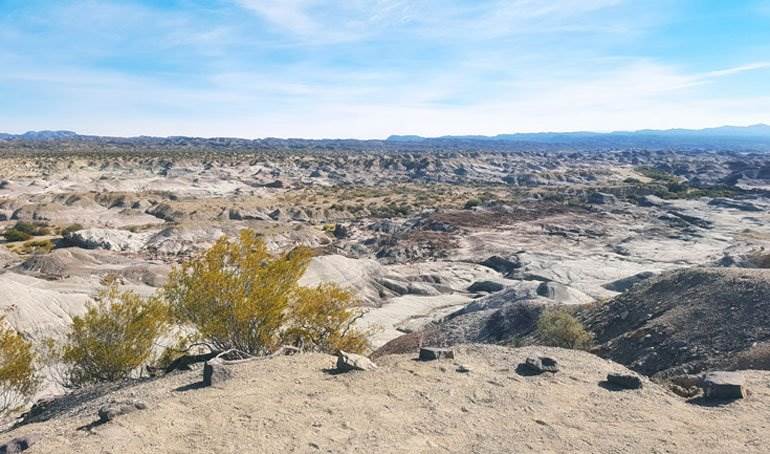
Ischigualasto Provincial Park gained UNESCO recognition for its significance as an area contributing to the study of dinosaur fossils during the Triassic Period.
Also called Valley of the Moon, Ischigualasto is also known for its otherworldly moonlike landscape. Mineral and sediments of different striations, shapes and hues form the landscape; while rock formations of irregular shapes add an extra-terrestrial touch. The most outstanding section of the park is a field of almost-perfect black spherical shape rocks that even scientists couldn’t explain the origins of.
Ischigualasto means ‘land without life’. Looking at the surroundings and noticing the eerie silence, that name is not an exaggeration. Ischigualasto is one of the most underrated places in South America – and that’s coming from someone who traveled one year on the continent.
Contributed by: Owen, My Turn to Travel
Jesuit Missions of the Guaranis: San Ignacio Mini
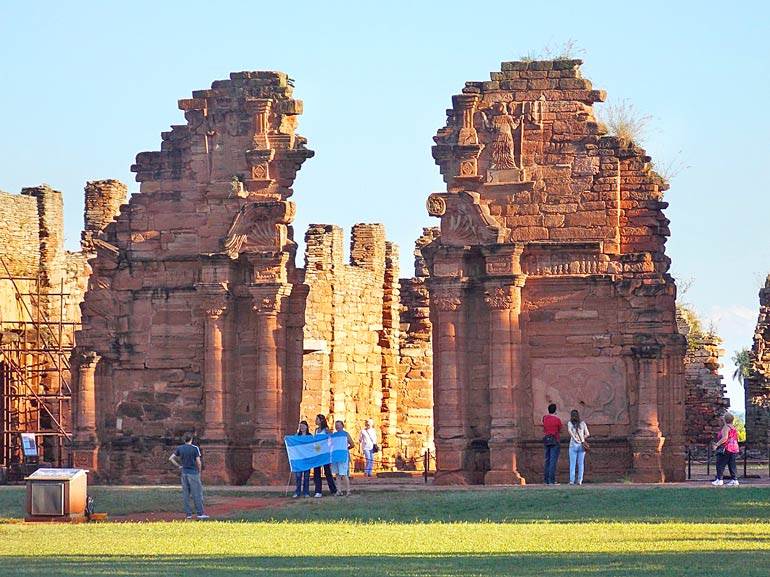
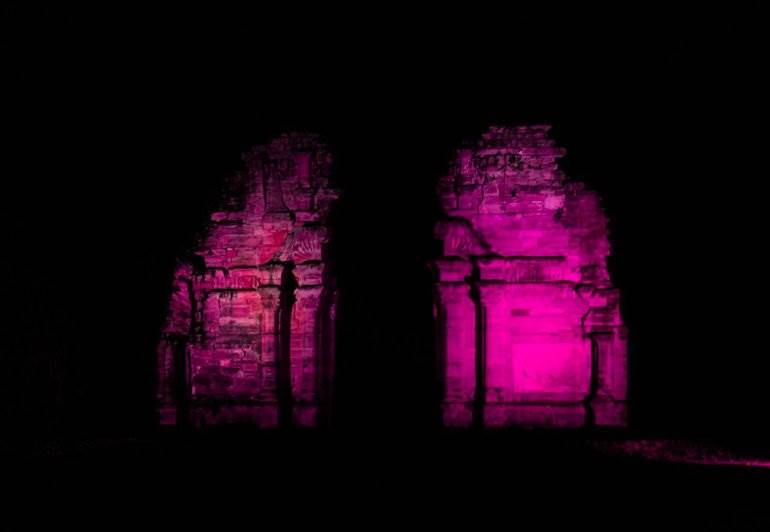
The little village of San Ignacio Mini, in the Misiones region of Northern Argentina, holds Jesuits ruins that once were used to “civilise” the local indigenous living in the forest and looking for protection against the Portuguese slave-hunters.
Hosting up to 3,000 Guaranis, the Jesuit reduction, however, collapsed under the Portuguese pressure during the Guarani War in 1750 and was left undisturbed until its rediscovery in 1897.
Declared a World Heritage site by UNESCO in 1984, the ruins now attract visitors for its impressive baroque style red tinted arches by day and an exceptional light and sound show by night, on which holograms relate the troubled history of the Guaranis and Jesuits. The tour ends with a fantastic view of the arches under colourful moving lights.
Contributed by: Jenny & Steven, Tales From The Lens
Península Valdés
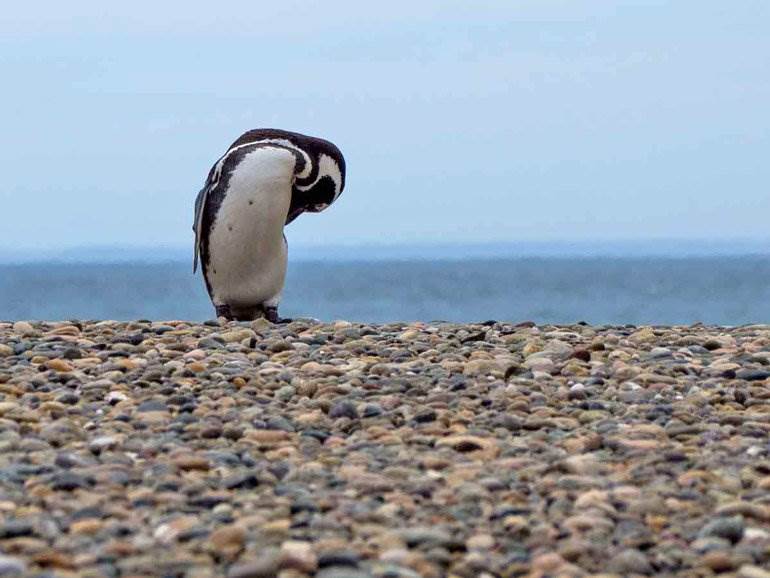
The Peninsula Valdes of Argentina is located in northeastern Patagonia. It’s a surprising place, loaded with enough marine animals to stuff a bucket-list worthy itinerary that rivals wildlife meccas like Sri Lanka and southern Africa.
The Peninsula juts out into the Atlantic and is a magnet for a staggering variety of marine animals. The peninsula and nearby bay provide breeding and nursing grounds for Right Whales, Southern Elephant Seals, Sea Lions, Magellanic Penguins, Dusky and Commerson’s Dolphins and Orca.
Most people go to Argentina for the natural beauty of the glaciers and Igazu Falls, but you should make room for the graceful wildlife of the Peninsula Valdes.
Contributed by: Carol, Wayfaring Views
POPULAR: 42 Magnificent UNESCO Sites in Europe Essential to Your Bucket List
BRAZIL
Historic Centre of Salvador
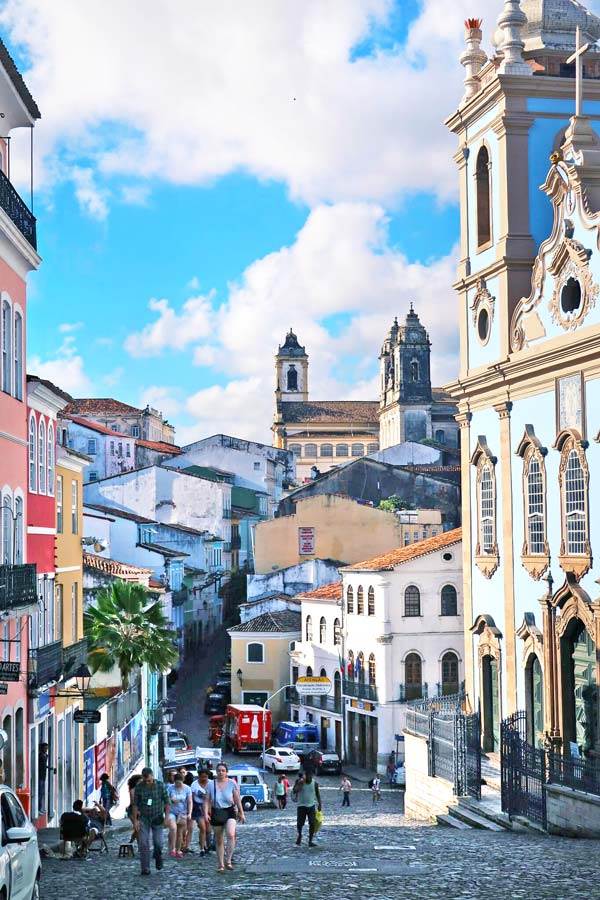
Brazil is no where near short of UNESCO World Heritage Sites, but after travelling to Latin America numerous times there was one site that kept calling my attention.
The Pelourinho district, is the official historic centre of Salvador Brazil. Just walking around the site gives you a sense of the power as you’re greeted with warm smiles.
I marvelled at how colourful the buildings were and looking around at the local life. Pelourinho has turned into one of the best places to learn about African heritage in Brazil. In the surrounding area you’ll find museums and other pleasing artefacts. The evening is a great time to be at the heritage site, as this area is renown by tourists as one of the best places to hear live African drum beat ceremonies live.
Contributed by: Dan, Layer Culture
Historic Town of Ouro Preto
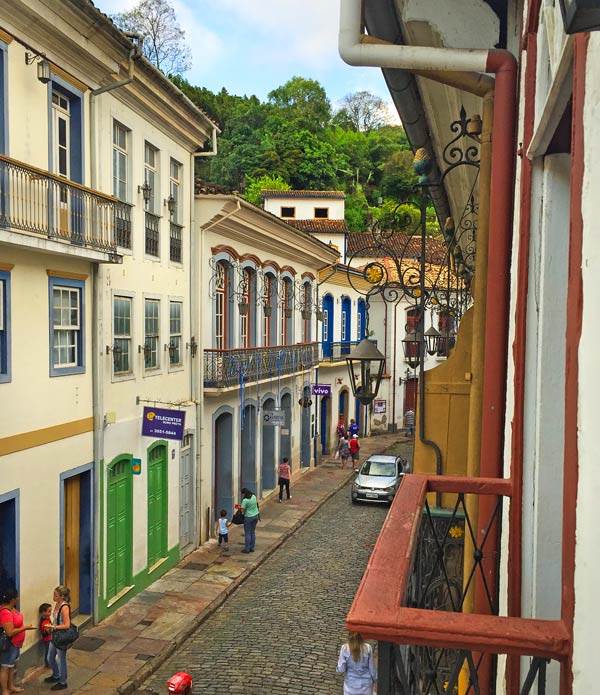
Ouro Preto received its UNESCO world heritage status because it is a perfectly preserved 18th century Portuguese colonial town that was once the largest city in South America. Ouro Preto was the centre of the Brasilian gold rush.
In the 18th century, Portugal’s rise as a world power was financed by the hundreds of tons of gold it received from the Ouro Preto region. The people of Ouro Preto flaunted their wealth by building elaborate houses and thanked their God with gold-embellished churches.
Unfortunately, the gold was hand dug from the mines through the use of African slaves. You can still take a gold mine tour in Ouro Preto and see the hand-carved gouges in the mine’s walls!
Contributed by: Shobha, Just Go Places
CHILE
Easter Island

It is not a surprise to see the mysterious Easter Island made it to the some of the most intriguing UNESCO World Heritage Sites. However, while everybody has heard about this place, only a few have visited and explored this amazing island, remotely located in one of the most secluded locations on earth.
The island, locally known as Rapa Nui, is famous for its unique Moai. This tiny island is littered with around 400 big head statues. You can visit the birthplace of the moai, Rano Raraku quarry, where all of these moais were carved, and subsequently abandoned.
There are many mysteries of Easter Island, mostly surrounding the ancient Rapanui people. They arrived on this island almost a thousand years ago, carrying with them the root of the Polynesian culture, as well as developing their own unique characteristics.
UNESCO and many nations have participated in several restoration projects of the many important sites around the island. Don’t miss the Highlights of Easter Island: Ahu Tahai, Ahu Tongariki, Rano Kau, and the Orongo Village.
Contributed by: Halef, The Round The World Guys
READ MORE: 20 Magical UNESCO Sites in Asia Essential to Your Bucket List
ECUADOR
Historic Centre of Santa Ana de los Ríos de Cuenca

Our favourite UNESCO World Heritage Site is definitely the Historic Centre of Santa Ana de los Ríos de Cuenca. Sitting high in a valley in the Andes, Ecuador’s third-largest city has a lot going for it – dirt cheap prices, springtime weather year-round, plus some of the most gorgeous Spanish colonial architecture we’ve ever seen.
Ever since Cuenca was founded back in 1557, its colonial centre, El Centro, has been inhabited. As a result, this Spanish Colonial city shows all the lived-in wear and tear that any place would have after all that time, and it retains its local flavour.
Couple the beautiful city centre with its Inca and Canari heritage, then add in the locals’ colourful garb and Quechua language, and Cuenca is definitely worth seeing. Here’s a tip for your visit: It makes a great base both for visiting the Amazon and seeing Ingapirca, the largest Inca ruins in Ecuador.
Contributed by: Linda, As We Saw It
PERU
Historic Centre of Lima
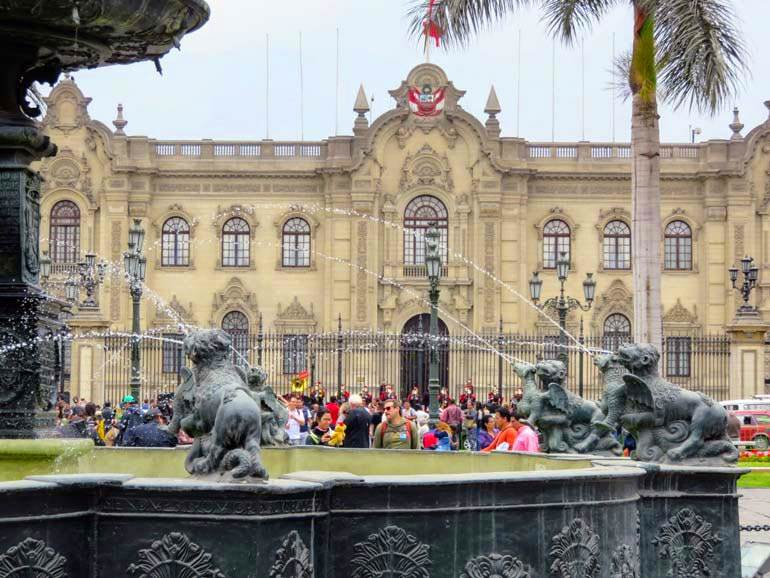
The Historic Centre of Lima is my favorite UNESCO World Heritage Site in South America because it’s so real. Peru is chock full of UNESCO sites like Macchu Picchu and Cusco but Lima really resonated with me as a modern business and foodie city with a rich historic core often overlooked by tourists.
Plaza de Armas features impressive Spanish colonial architecture. We timing our visit to coincide with the changing of the guard at the Palacio de Gobierno del Perú at noon which felt like taking a step back in time within the modern city limits of Lima. The guard changing ceremony is surprisingly intricate and takes about an hour.
Lima by Walking is a great way to get a half-day overview of Lima and Peruvian history for the cost of bus fare and a tip. Guides shepherd groups from the tourist bastions of Miraflores and Barranco on public transportation to the Historic Centre. Lima by Walking is a safe and easy way to explore the heart of the Peruvian Capital.
Contributed by: Jennifer (aka Dr. J), Sidewalk Safari
READ MORE: 9 Incredible UNESCO Sites in Australia & New Zealand Essential to Your Bucket List
Historic Sanctuary of Machu Picchu
I’ve wanted to visit Machu Picchu ever since I can remember. When I booked my flight to go backpacking in South America, Machu Picchu was the only thing I really cared about doing, everything else faded into the background. The Inca Citadel perched on top of a mountain, surrounded by jungle.
It is no surprise that the Spanish didn’t find Machu Picchu when they came to Peru. That feeling of uncovering something amazing still lingers, despite the throngs of tourists who come to the sight every day.
I stayed overnight in the town of Aguas Calientes, and queued for a bus at 4.30am to get me to the gates at 6am when they opened. I found a quiet place to sit and watch the sunrise.
There are no words to describe that moment when you see the ruins for the first time. It was misty at first, but as the sun’s rays peeked over the mountains and the whole city of Machu Picchu was bathed in golden light I couldn’t help but shed a tear.
Contributed by: Claire, Tales of a Backpacker
What UNESCO sites in South America will you add to your list?
So that’s a wrap for these superb UNESCO sites in South America! After finding out why each world heritage site holds significant meaning and are our bloggers’ favourites, are you planning on adding any to your South America bucket list you hadn’t thought about or known of before? Let me know!
If you enjoyed this article stay tuned for the final instalment of my UNESCO World Heritage site series coming very soon (and here’s the series so far if you’d like some further UNESCO inspiration). I’d also love if you’d come and join me on Facebook, follow me on Instagram or don’t forget to pin it to Pinterest!
Until next time,
Like it? Pin it!
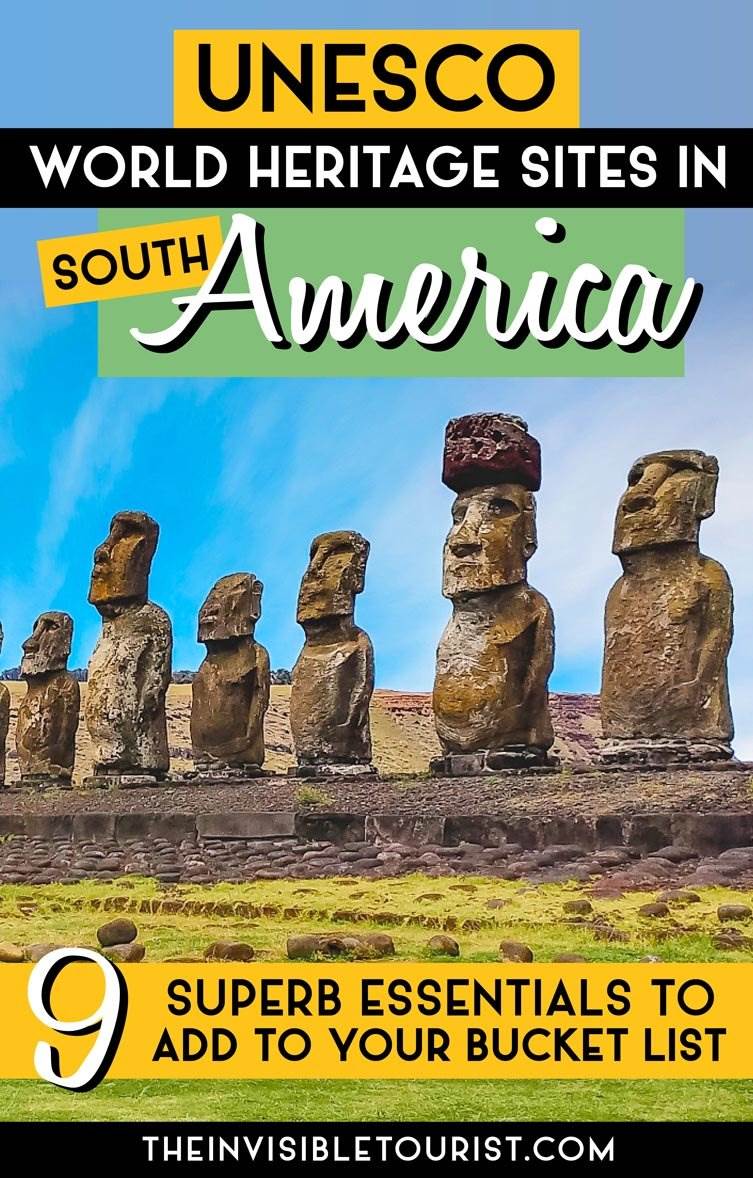
Featured image credit: myeviajes via Pixabay
Machu Picchu pin mage credit: Poswiecie via Pixabay
Easter Island pin image credit: Walkerssk via Pixabay
All blogger images are used with permission from the copyright holders.


